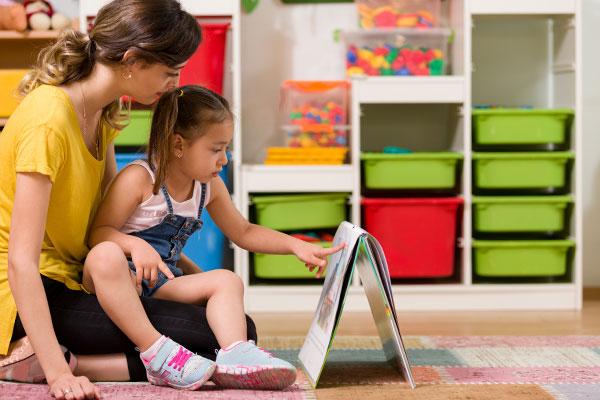Creating a Learning Home
Did you know there are ways you can make your home a learning home for your child? These changes can be small and inexpensive but can have a BIG impact.
Get creative: provide a variety of materials for your child to play with. You don’t need to buy fancy or expensive toys. How can you play together with common household items, like empty boxes and cooking pots? Have your child paint small rocks to look like insects and animals and place in the garden. Make a game of calling out the different sounds items make around the house.
Make sure your child can reach things on their own: Put toys, books, and clothes on low shelves or in low baskets so they can make choices for themselves. A coat hook at eye level will allow your child to hang up their own jacket and hat. A step stool helps children reach the sink to wash hands and brush teeth.
Help your child learn about time: Hang a clock or calendar next to their shelf at eye level. Write a simple daily schedule on a small blackboard where your child can view it with you and ask questions.
Let your child help in organizing their things: Put a box or basket by the door for school items. Labeling shelves will help your child put away clothes, toys, and books.
Does your child have a quiet space to learn? Have a phone and screen-free room or outdoor space where your child can look at books, talk with you, or just think.
Use these ideas to help make your home a learning home for you and your family.
References:
Responsive Learning Environments, Head Start|ECLKC )Early Childhood Learning & Knowledge Center), https://eclkc.ohs.acf.hhs.gov/publication/responsive-learning-environments
Tips for Families: Designing Environments, The National Center on Quality Teaching and Learning, https://eclkc.ohs.acf.hhs.gov/sites/default/files/pdf/no-search/iss/managing-the-classroom/design-environments-family-tips.pdf

